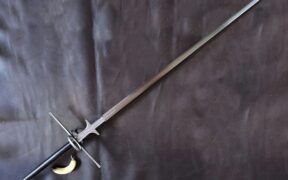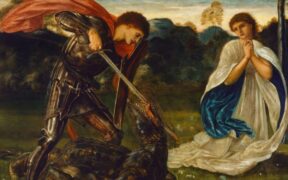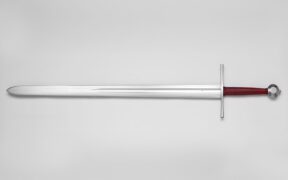Our content features commercial links to our products, committed to transparent, unbiased, and informed editorial recommendations. Learn More
Joyeuse Sword: The Legendary Sword of the Father of Europe
NO AI USED This Article has been written and edited by our team with no help of the AI
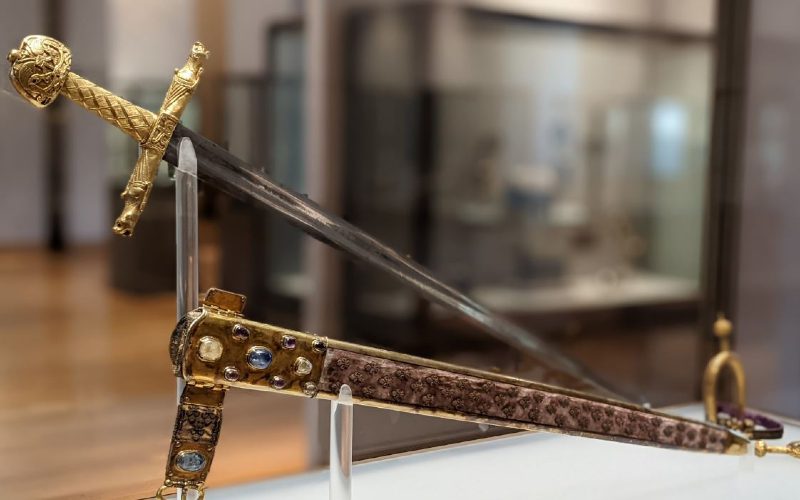
The medieval sword that was used by Charlemagne the Great, also known as the Father of Europe who built the foundation of modern western Europe, is called the Joyeuse sword or the Joyful sword. It is a sword that has many legendary elements to it and was used to coronate kings of France.
In this article, we will start with a brief explanation of who Charlemagne the Great was. Then we will cover the visual characteristics of the Joyeuse sword as well as its biggest uses. Finally, we shall explain to you its troubling history and the most interesting legends that surround it, and even whether you can own a Joyeuse for yourself.
Who Was Charlemagne the Great?
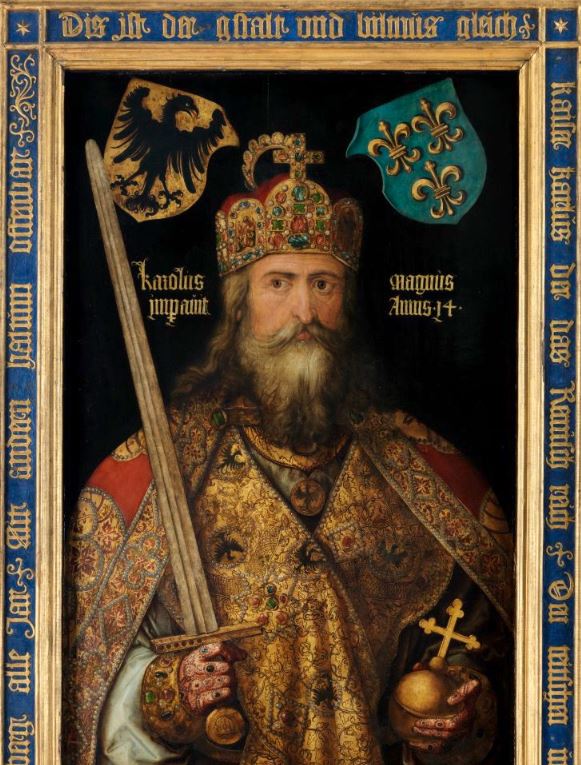
Charlemagne, also known as Carolus Magnus Rex, Charles the Great, the King of the Franks, and the Father of Europe was the first recognized emperor after the fall of the Western Roman Empire.
The famous commander was born in 742 AD and lived till 814 AD. He helped shape and define the Holy Roman Empire, one of the most important and well-known empires in European history the very foundations of modern-day Europe are built upon today.
Charlemagne’s Empire was built on the fierce power of the Franks, who were a group of barbarian tribes from the Rhine regions of Germany. When the Western Roman Empire fell, they moved quickly to fill the power void left behind and stabilized themselves in the regions of present-day France.
Charlemagne was one of the first unifiers of the western world. He conquered and ruled a vast empire of modern-day France, Germany, Austria, Switzerland, Netherlands, Belgium, Luxembourg, part of Italy, and the northeastern part of Spain; that’s why he’s sometimes called the Father of Europe.
He was known for his ferocity, having started lots of wars with countless brutal beheadings and executions in his wake over the lands he conquered. At the same time, Charlemagne did so much to improve the overall economy, arts, literacy, and knowledge throughout all of Western Europe in a period known as Charlemagne’s Renaissance.
Characteristics of the Joyeuse Sword
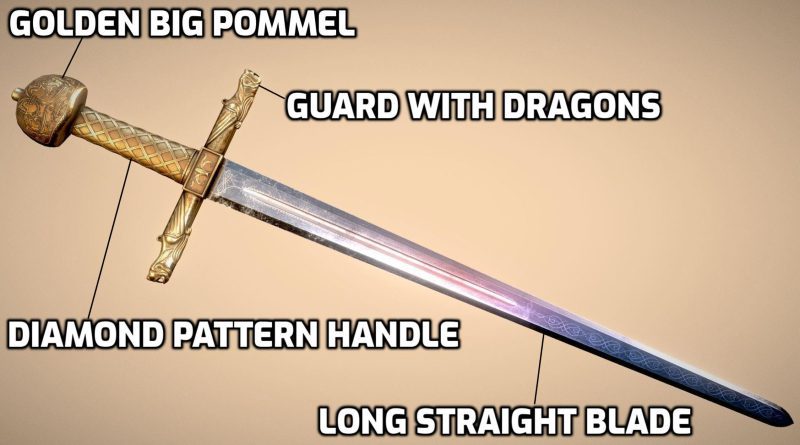
At first glance, many can see that the Joyeuse sword looks like your typical Arming sword from that period – albeit with some elegant improvements. It’s in the shape of a crucifix with a straight handle, a large crossguard, and a blade that ends with a pointed tip.
Over the years this sword has gone through a lot of changes and modifications. In this article, we are going to discuss its looks as they are right now.
Blade
The blade of the Joyeuse sword is an Oakeshott sword type XII (a classification of sword type) which is quite thin and not very long. It has a fuller that is wide and shallow. The blade is 32.6 inches (82 cm) long and 1.77 inches (4.5 cm) wide at its base.
It is made from steel and it is almost the same as an Arming sword in its length and looks. The blade’s material looks almost brand new right now in the museum of the Louvre, somehow evading centuries of wear or corrosion.
That is why there are different ideas about how old the blade itself actually is. One group thinks a new blade was made when the sword was fixed and got renovated in 1804, while another group thinks it is from the Middle Ages or the same blade that Charlemagne would have used centuries ago.
Guard
The guard of this sword is a crucifix style and it is fairly large. It is of course covered with gold to accurately represent the Father of Europe and it suits him. The first guard of this sword probably didn’t have the same looks, but it would have offered very good protection to the wielder’s hands.
This golden cross is 8.9 inches (22cm) wide which is fairly large for a crossguard. On the ends are what look like two dragons with lapis lazuli beads for eyes. In the 1300s it had the cross added that was stamped with the weight of the gold in the hilt of the sword.
Handle
This handle is straight and also covered in gold. It is around 4 inches (10 cm) long and has a very big pommel at the end of it.
It has a very intricate-looking diamond pattern around the whole handle made with fleurs-de-lis, which can still be seen today. When Napoleon I was coronated in 1804, he ordered to have them removed as they resembled and showed traces of the old rule of Charlemagne.
Pommel
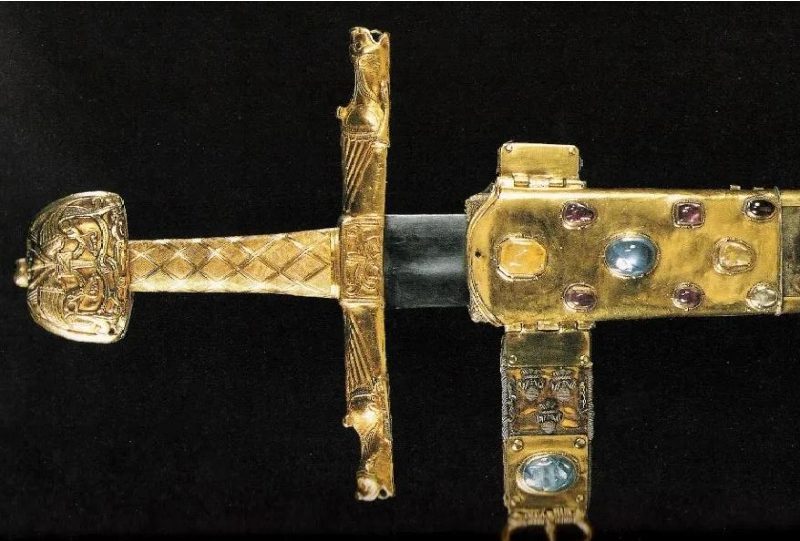
The pommel is very big, round, made of two halves, and, of course, covered in gold. It would give Charles the Great a very good grip and support the back of his hand. Because it is a big pommel, just like the Arming sword has, it would also allow it to be used as a two-handed weapon.
Scabbard
The scabbard of the Joyeuse sword is made of silver that has been gilded with gold. The scabbard is around 6 inches (15 cm) wide at the throat and is lined with gems. The rest is coated with purple velvet and embroidered with gold fleur-de-lis which was added in 1824 when Charles X became king.
The overall length of the scabbard of the Joyeuse sword is 33 inches (84 cm) long. A lot from the scabbard has changed throughout the years. It is believed that the only original thing from Charlemagne’s time is the belt.
Size & Length
The overall length of the Joyeuse sword is 41 inches (105 cm) long. This makes it an ideal weapon that could be used for both mounted combat or on-foot scenarios and would have been used with a shield in the non-dominant hand.
Weight
The total weight of the Joyeuse Sword is 3.5 lbs (1.6 kg). This makes it a fairly heavier than the average Arming type of sword of its time.
Of course, this weight is because there are so many added materials like gold, glass beads, gemstones, embroidered velvet, and gilded silver. Even with the extra weight, it would be usable and very deadly in combat scenarios.
Uses for the Joyeuse Sword
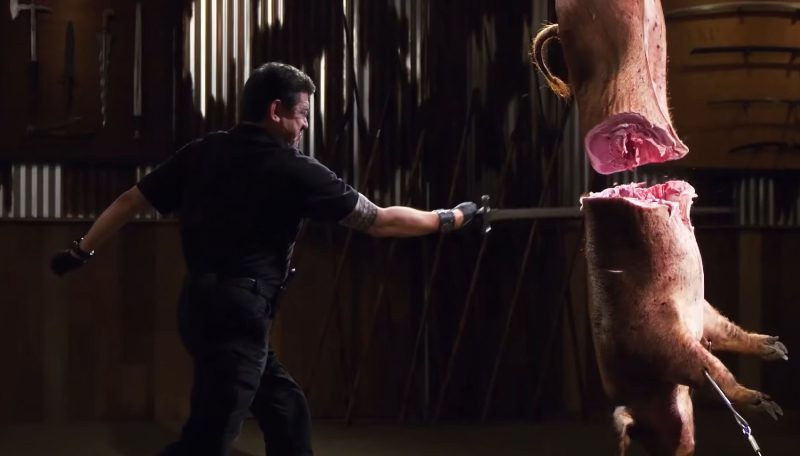
Charlemagne’s sword is the perfect length to be used either one-handed or two-handed. It all comes down to personal preference. It is a weapon that has double-edged, meaning that it can be used for slashing from either side of the blade, but also can be used for thrusting.
If you decide to own a Joyeuse sword you can use it both for strikes if it is battle-ready, but you can also have it as a very renowned and prestigious decorative piece, especially if you get it in gold. While it was used for warfare, it was mostly a ceremonial piece of weaponry.
Warfare
The Joyeuse sword was most certainly used in warfare on many different occasions. The most notable example is the battle of Roncevaux which took place in the year 778. Charlemagne more than likely would have brought it with him and used it to spread his borders far throughout the land.
There are some instances where it is said that the Joyeuse sword was beheading the enemies of Charles the Great, especially some Saracen leaders.
Coronation & Ceremonial
The biggest use, however, for the Joyeuse sword is of course the ceremonial element of it. Since it comes from the great Father of Europe – Charles the Great, it has enormous prestige linked to it. That is why it was used to coronate all the French kings till 1824 and is known as a coronation sword.
Also, during the time that Charlemagne reigned he had this weapon serve as a mighty tool that was spreading folklore legends not just in his kingdom, but throughout the whole of Europe.
History of the Joyeuse Sword
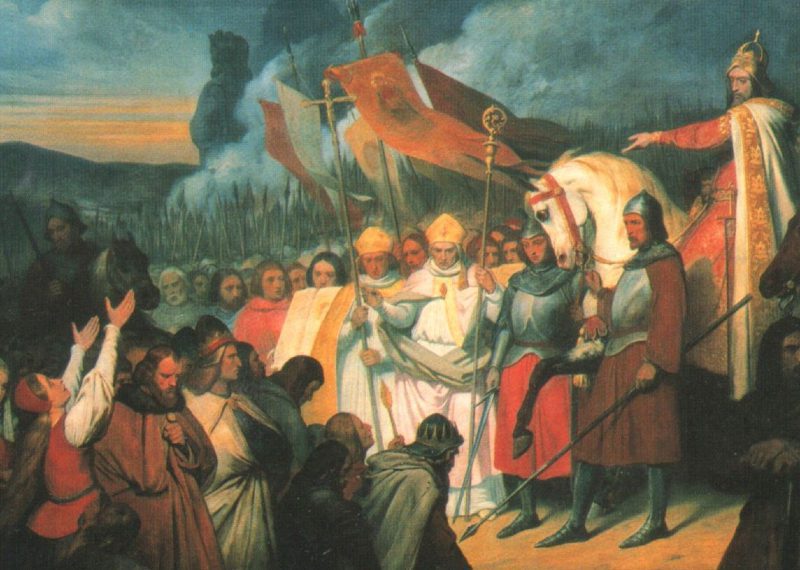
The Joyeuse is without a doubt one of the most, if not the most, well-known legendary swords from European history. Despite having lots of legends and myths surrounding it, the Joyeuse sword that was used by Charlemange was a real sword.
The history of it is certainly troubled though. Two main groups are divided on the origins of the sword. One group says that this sword was made in the time of Charlemagne and was used by him. They also say that the one that we have today in the Louvre museum is the very same sword from his reign.
On the other hand, the other group says that this sword might have come a little later than King Charlemagne and was used to pronounce or strengthen the bonds of the French kings to the ruler of the Holy Roman Empire. Since these types of swords appeared a little later than Charlemagne’s reign, they believe that is direct proof that it couldn’t have been forged in his time.
Still, there are a lot of experts like Oakeshott that argue that this sword could indeed have come from Charlemagne’s time. That is why in the museum of Louvre, almost all the parts of the sword are cited as coming from different centuries.
The closest we can get to the real history of the Joyeuse sword is to say that this sword could have been made in Charlemagne’s time, as there are many legends and stories written about it, but the only part that could be the very same would be the belt in the scabbard and the parts of the steel.
Other than that, all other parts of this sword have been modified or changed making this sword look as new as it does to this day.
Legends
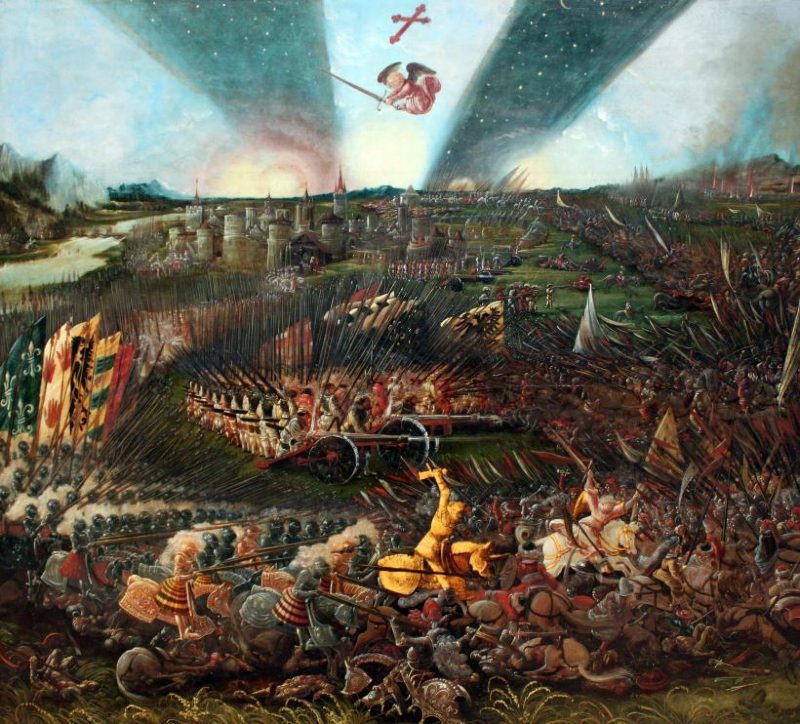
The main reason why the Joyeuse has such significance is that it has a lot of folklore, legendary, and mythical elements to it. As the centuries passed the stories only grew and made this sword much more famous and renowned. This period is known for famous swords coming mainly from the Song of Roland (12th-century manuscripts).
Here we will mention a couple of the more interesting legends about the sword’s magical powers.
Creation of the Joyeuse Sword
Legend has it that Charlemagne was on his way back from the Spanish conquest when he set camp where the legendary blacksmith Gallas was working. Gallas would begin crafting this sword and he would not finish it for 3 more years.
It is said that Gallas forged the Joyeuse with the remaining shards of the infamous Lance of Longinus, the spear of destiny that pierced the side of Jesus on the crucifix.
Outshone the Sun
Whenever Charlemange would march into battle, he would always carry the Joyeuse with him. When the battle would have commenced, he would unsheath the sword from its scabbard and legend has it that it would shine even brighter than the sun.
This would leave the enemies that he faced blinded by the very bright radiance that emitted from the sword and Charlemagne could easily slaughter all his foes.
Immunity to Poison & 30 Colours
It is said that whoever mastered the Joyeuse sword would be immune to all poisons. Also, the Joyeuse sword appeared to be many different colors. Sometimes it could become 30 different colors over the course of a day.
The Town of Joyeuse
In one of the many battles that Charlemange had, it was said that he had somehow lost his sword. He promised a massive reward if it was found by any of the people living in the area. One of his knights allegedly found the sword and brought it back to him.
He then planted the Joyeuse in the ground and proclaimed that the new ruler of this land will be that very same knight and that is why the name of that land is called Joyeuse to this very day.
Can You Own a Joyeuse Sword Today?

Yes, you most definitely can.
There are many swords that modern swordsmiths are making simply because of how popular they are in modern times and the Joyeuse is no different. There are plenty of replica models available in battle-ready and sharpened conditions, but you can also find some for sale that are just for decorative purposes.
A replica Joyeuse sword’s price can range all the way from $150 to $2000 depending on the quality and decorations. Since it’s one of the most legendary swords in all of Europe, owning a Joyeuse sword will certainly upgrade your sword collection.
Conclusion
Today Charlemagne’s Joyeuse sword represents a very important part of both the legendary and very real history of Europe. It is a sword that directly had a hand in the creation of the European continent as we know it today.

